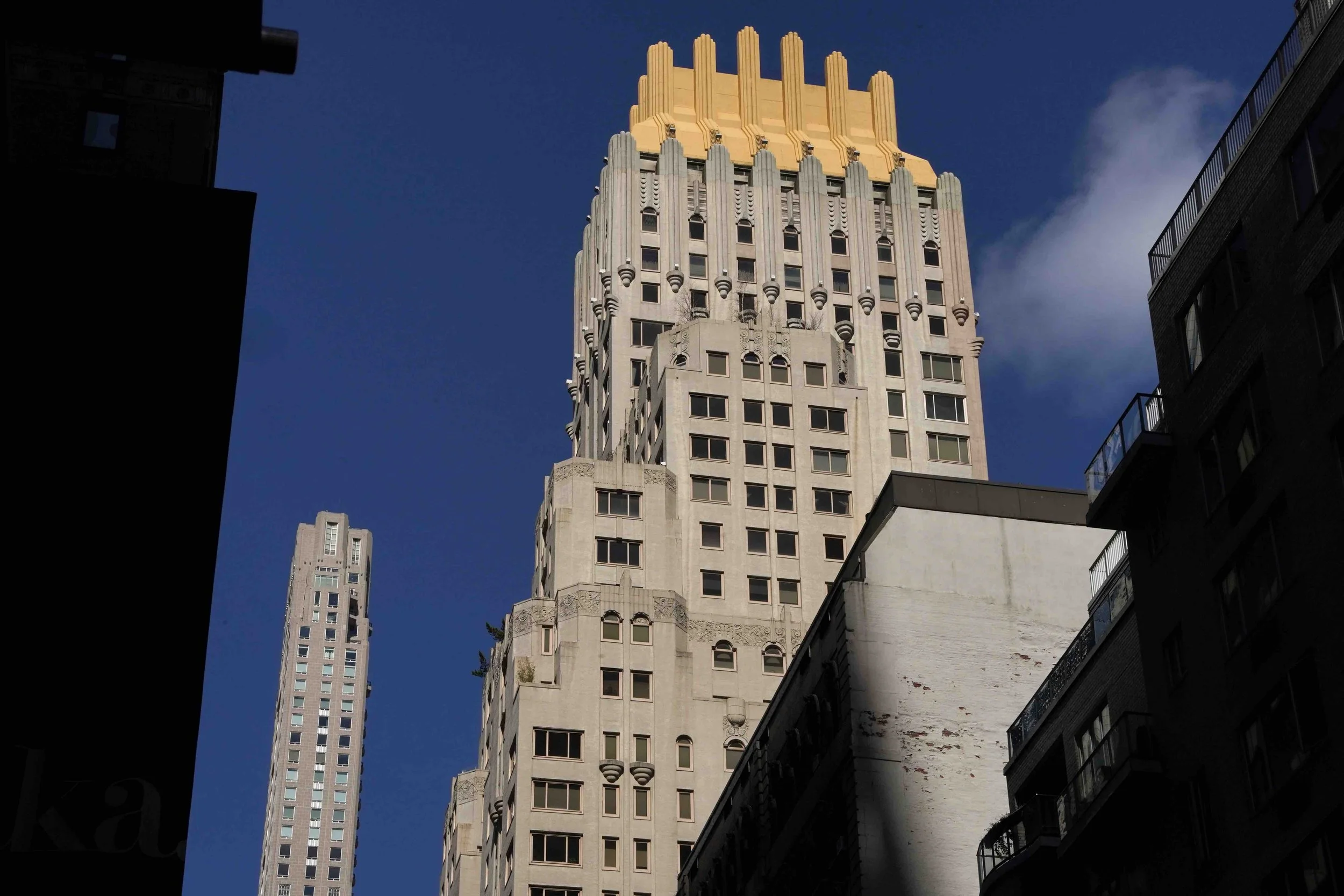Crazy tops: Barbizon Plaza HoteL
Guglielmo Mattioli
Looking south from the Great Lawn in Central Park, one can appreciate New York City’s transforming skyline: pencil-thin supertall skyscrapers, the product of creative air rights transfers and complex real estate negotiations. But despite all the change, there is one building that is still a prominent member of the skyline, albeit only 450 feet tall, Barbizon Plaza.
One of New York’s art deco gems, the Barbizon boasts an iconic gold top, crowned with what looks like the pipes of an organ shining against a backdrop of contemporary glass towers. But the tower’s current crown, a decent post-modern design, isn’t original and pales in comparison to its initial form.
Constructed between 1928 to 1930, the Barbizon Plaza featured a one-of-a-kind four-story glass atrium top, consisting of both structural glass tiles and hollow glass blocks. It was the first glass-pinnacled skyscraper, and the first building in the country to use glass blocks as a wall material. But it wasn’t just the glass that made it iconic but the lighting. Other extraordinary tops in town were illuminated by external floodlights but not the Barbizon. In this case, the light came from within – floodlights reflecting against glass mirrors that could change color. Indoors, the top was a fitness center and a solarium. Sun rays would filter in through the glass blocks during the day but at night the internal floodlight would filter out making the top a true, full-blown lantern that glowed like the moon.
“The Barbizon Plaza’s rooftop was
evocative of a jewel-like garden folly set atop the New York City skyline. At a time when many
architects built skyscrapers along Central Park with whimsical rooftops above the Park’s treetops,
the Barbizon Plaza’s shimmering glass lantern stood out amongst the others. ”
Designed by Laurence Emmons, the Barbizon Plaza’s crowned top highlighted a building for New Yorkers meant for the spotlight. It was a hotel catered to artists and musicians. The building had soundproof rooms, auditoriums, art studios, and all the amenities they would need during their residencies. With Steinway HQ just a few steps away and Carnegie Hall up the street, this was the place to be. Throughout the years it also became a gathering point for homophile associations such as the Mattachine Society and today is part of the LGBTQ+ historic places of the city. But as Midtown Manhattan changed, so did the Barbizon. It lost its top in the 80s when Donald Trump bought the hotel and the building next door to develop condos. Initially, the plan was to demolish the whole thing and build a new tower facing the park but eventually, he realized it was more cost-effective to keep the current structure and renovate it. Trump put in charge his trusted architect Frank William who widened the windows and covered the iconic top in gold.
Photos and text by Guglielmo Mattioli



